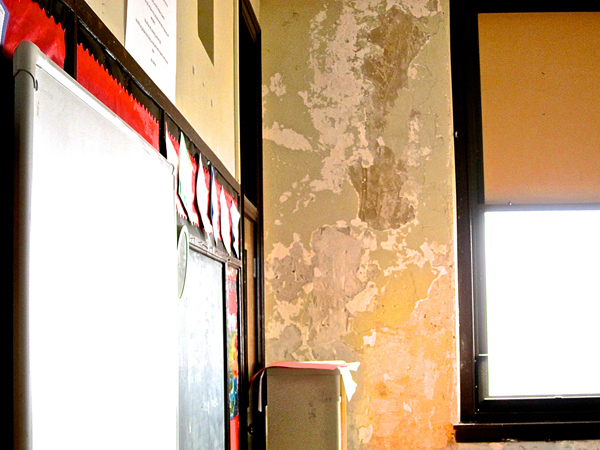Philly School District blocks a federal study after health risks are exposed
The crisis-wracked School District of Philadelphia has quietly abandoned a federal agency’s plans for further study of environmental-health risks in its aging school buildings. An initial review found pervasive dampness, mold or water damage — conditions that may aggravate asthma and other respiratory ailments — but the District has refused to make the complete findings public.
The limited results obtained by City Paper raise questions, including at Bryant Elementary School in West Philadelphia, where a visual inspection conducted during the first study found signs of water-related deterioration in 95.2 percent of the school’s rooms. Bryant was where a sixth-grade girl, Laporshia Massey, suffered what her father described as an asthma attack last fall when no nurse was on duty, and died later that day.
In fact, Bryant had the greatest prevalence of such conditions among 36 schools described in a summary dated March 20, 2012. Of that group of school buildings, more than 60 percent— 23 schools — had dampness, mold or water damage in more than a third of their rooms. A far smaller number of rooms were cited only for mold or mold odor.
The Philadelphia Federation of Teachers (PFT) Health and Welfare Fund believes that the District shut down a second study because it does not want to reveal the poor state of city school buildings.
“They realized that the study shows that they have a flaw in their system that allows these conditions to continue,” says Arthur Steinberg, who heads the Health and Welfare Fund. The District, he says, probably “didn’t like where it was leading” even though it was designed to “provide critical information on health conditions for kids, for staff members.”
The initial study was carried out by the District in partnership with the Health and Welfare Fund and the National Institute for Occupational Safety and Health (NIOSH), a federal agency that is part of the Centers for Disease Control and Prevention. What the Health and Welfare Fund describes as the study’s second phase would have investigated 50 elementary schools in depth, surveying the health of staffers and taking environmental samples from the buildings.
For its part, the District, which is run by the state-controlled School Reform Commission (SRC), denies that it shut down an ongoing project; instead, a spokesman says that a first project with NIOSH was completed, and the District decided not to participate in a second study because of its severe budget crisis, which continues to worsen and has led to widespread layoffs.
“It’s a separate research project that NIOSH wanted to do in the District, and we did turn that down because we are in the midst of very diminished resources,” says District spokesperson Fernando Gallard.
The Health and Welfare Fund says that does not make sense since the second study’s costs would have been paid by NIOSH. But the District says the time required of their bare-bones administrative staff would have been too onerous. NIOSH declined an interview request, writing in an email only that the agency is “currently working with those involved on possible next steps for this work.”
From: Philly School District blocks a federal study after health risks are exposed
By: Daniel Denvir
Photo: Jerry Roseman
